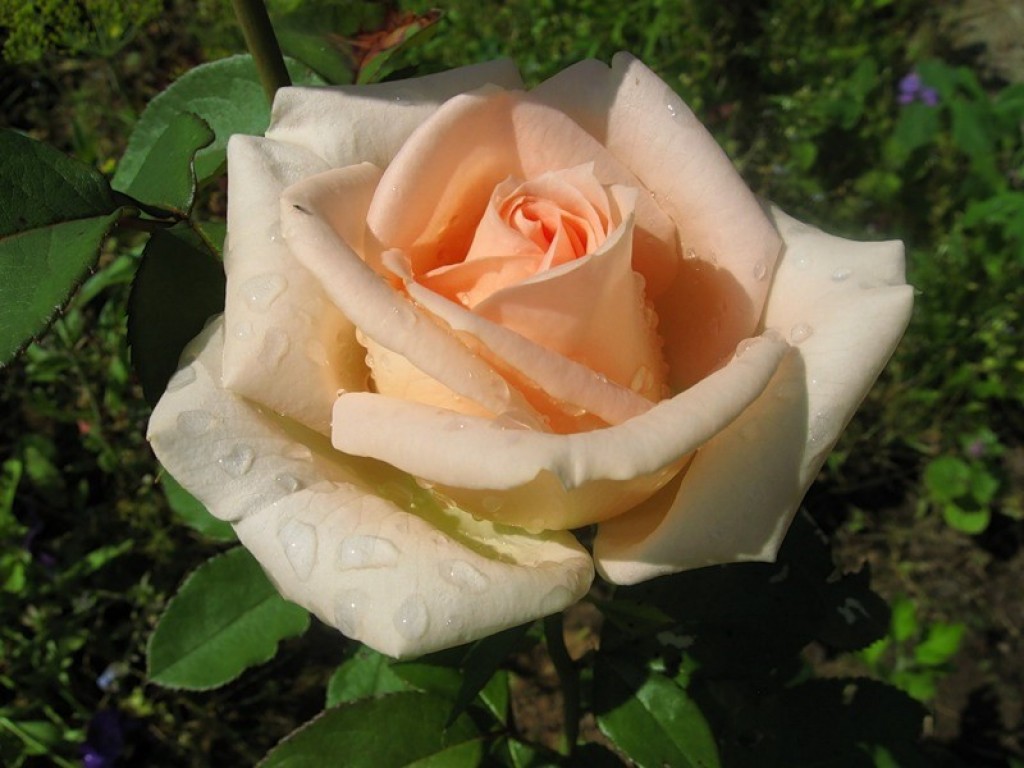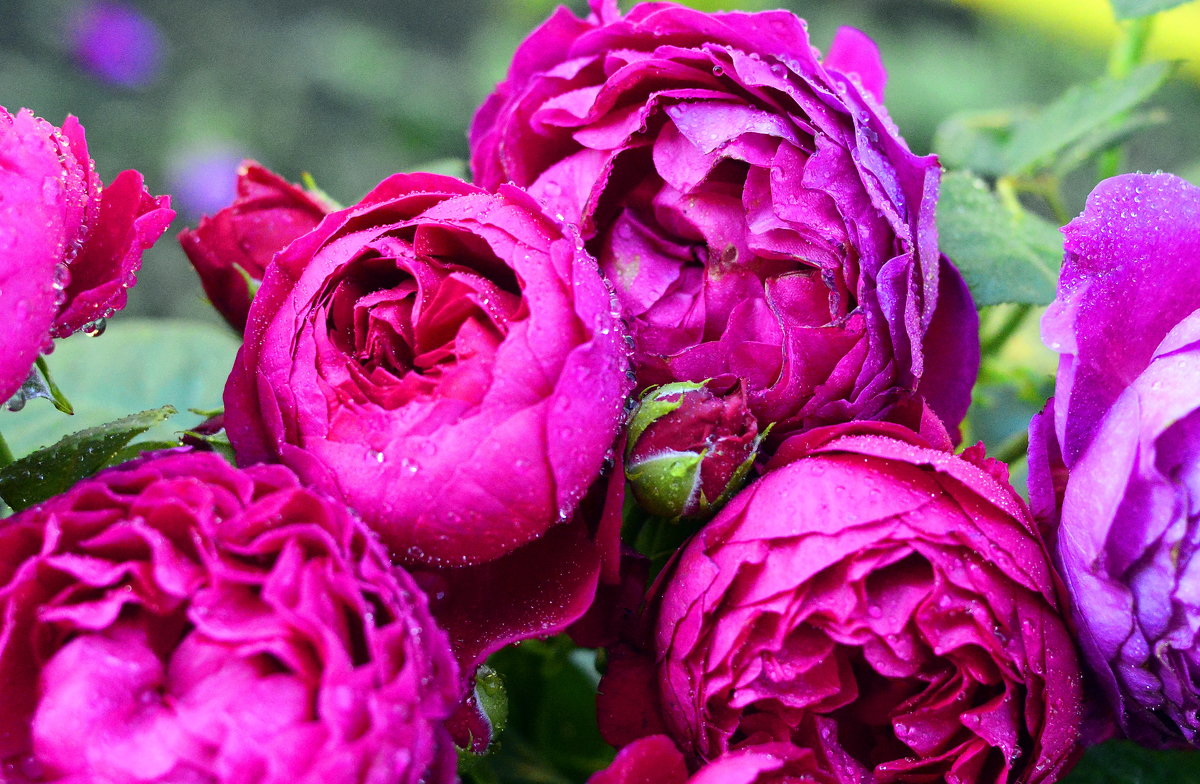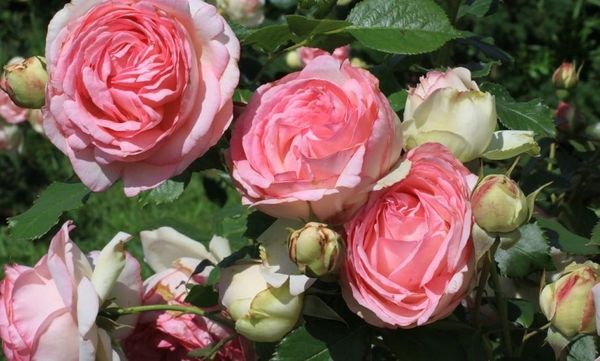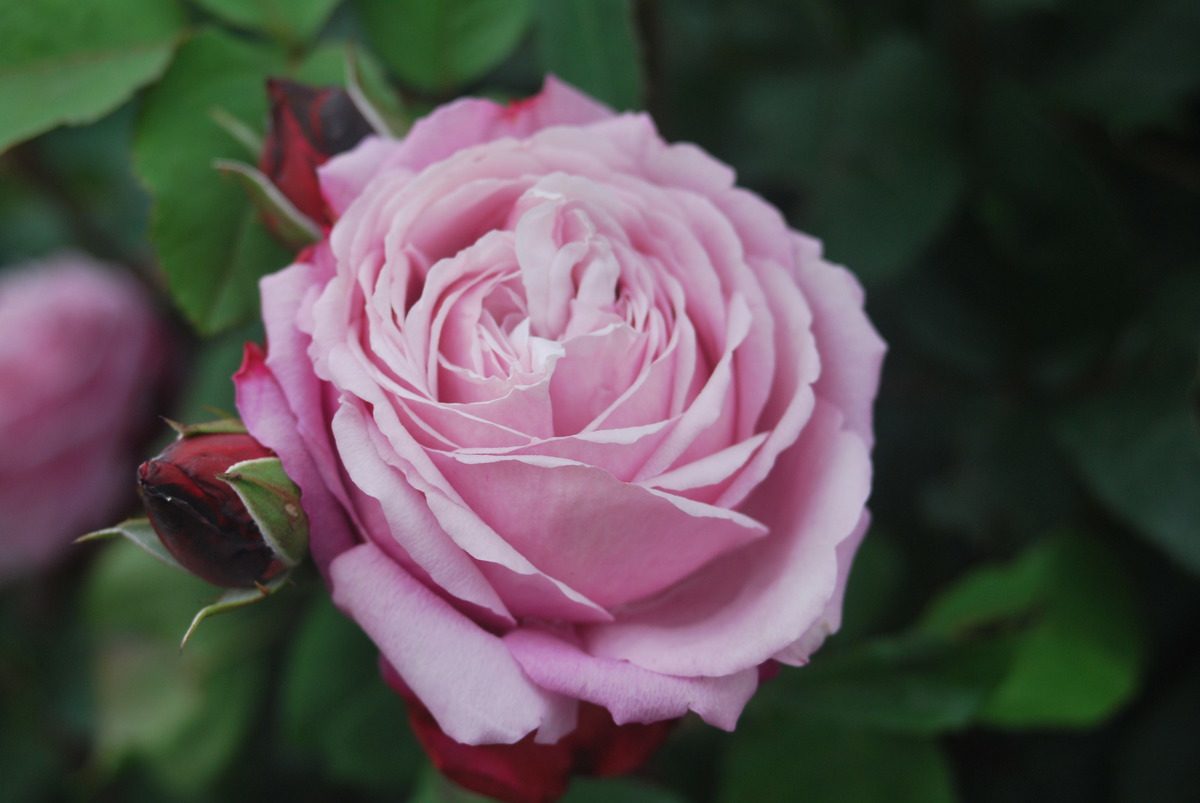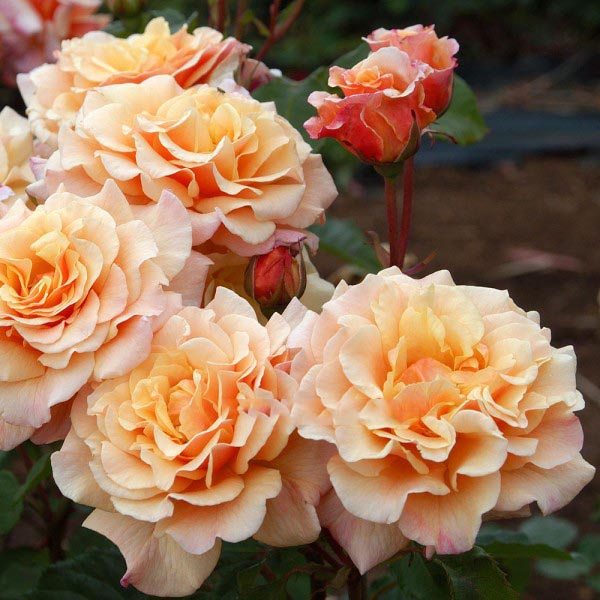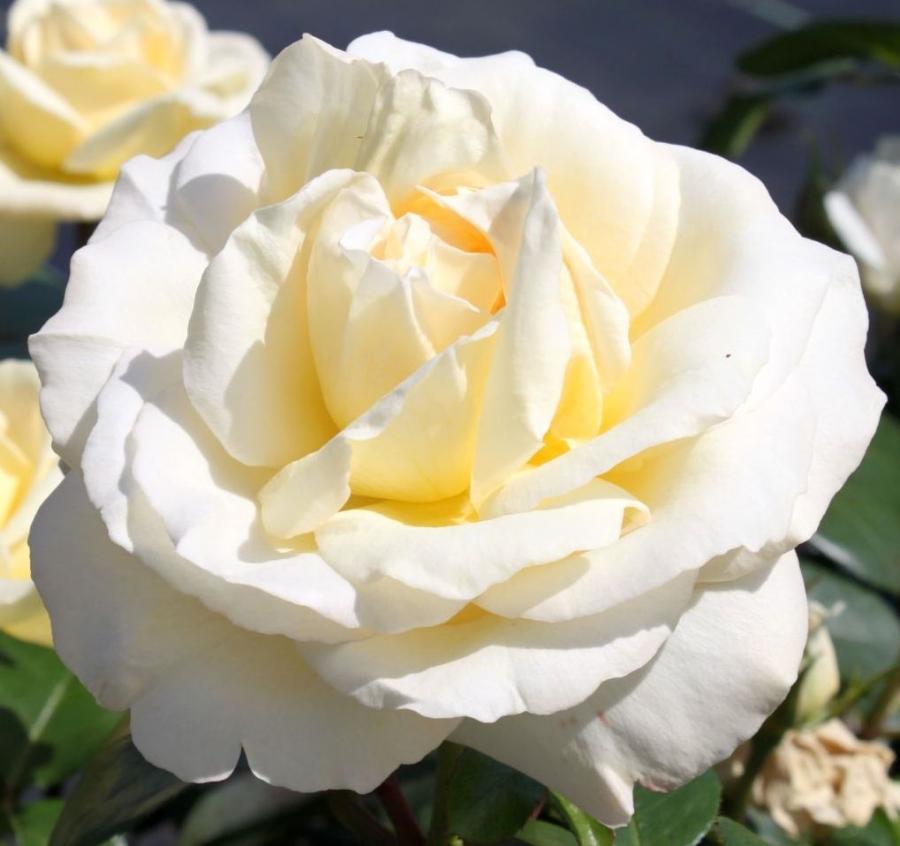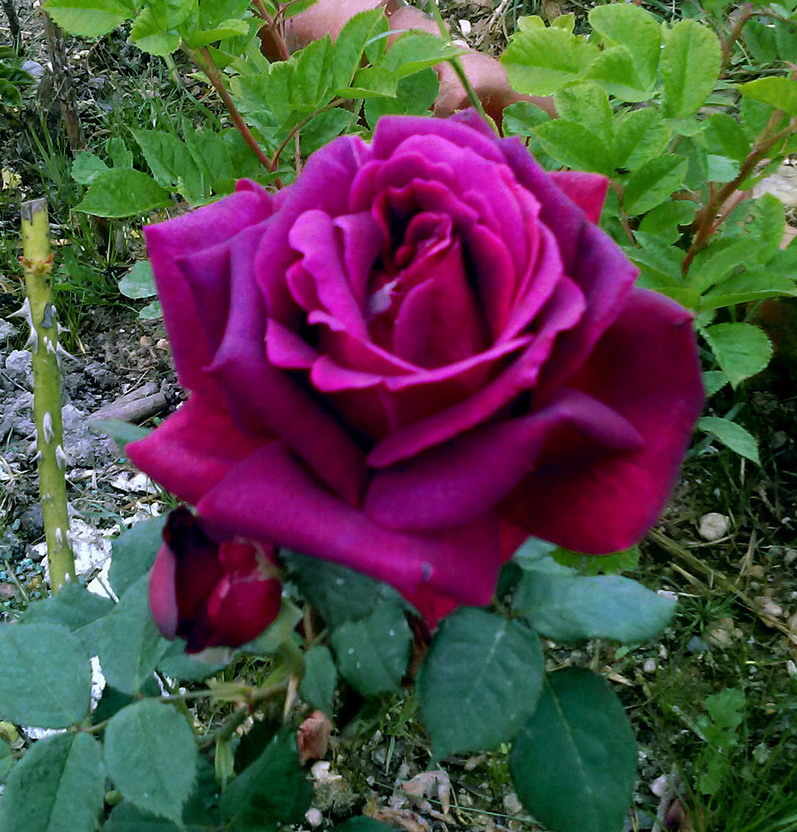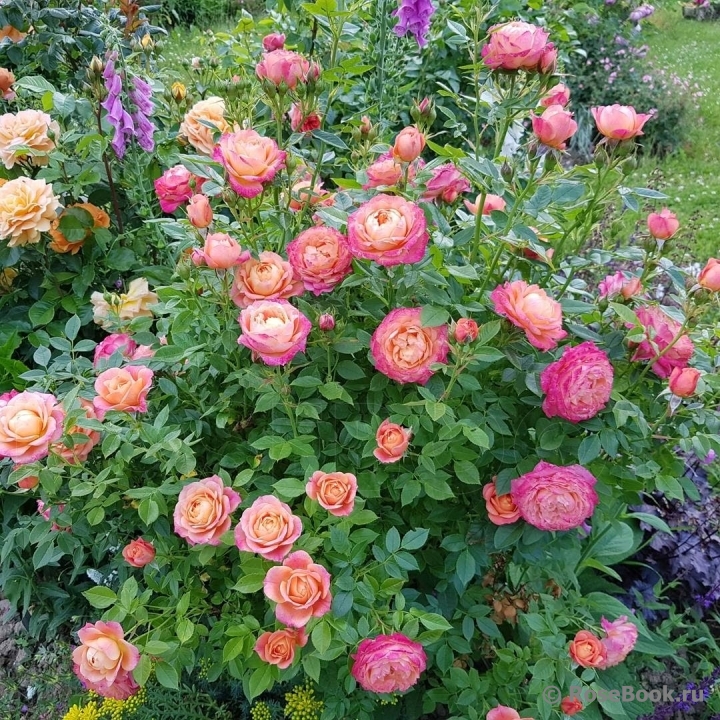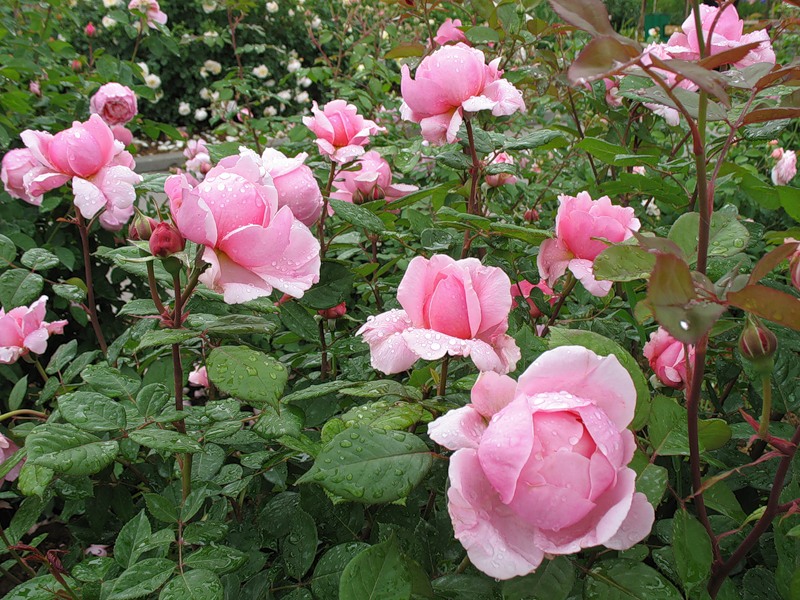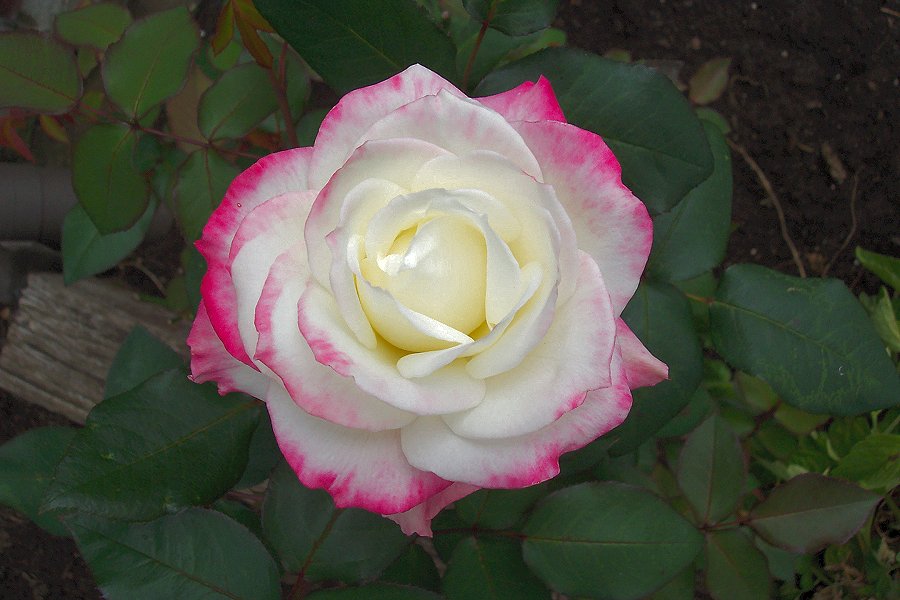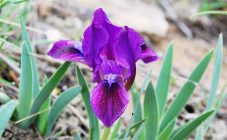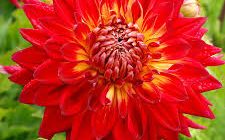Content:
Planting and growing rose bushes is a favorite pastime for connoisseurs of these beautiful flowers. Various varieties of roses are suitable for a small suburban area, and for a city garden. The main thing is to choose the one that is suitable for the growing region.
TOP-10 varieties of roses
- Rose Kennedy belongs to the hybrid tea group, has a faint aroma.
- Pierre de Ronsard - roses with large buds and a refined aroma.
- Rose Chandos Beauty - flowers with a light pleasant aroma with hints of cinnamon.
- Jean Cocteau - bushes exuding a pleasant, almost imperceptible smell.
- Rose Ballerina is an odorless musky variety.
- Rose Grand Prix pleases the eye with large buds, the smell of which is close to Dutch roses.
- Rose Laurent Cabrol is a French variety with a subtle aroma.
- Dieter Müller is a bushy variety with a spicy aroma.
- Golden Scented - A climbing variety of bright yellow color with a hint of honey in the aroma.
- Sympathy - flowers with the strongest aroma characteristic of roses.
Basic principles of care and growing roses
This or that variety of roses requires special care, which must be taken into account before planting seedlings.
Roses Kennedy and Ascot
To plant a Kennedy rose, you need to find a well-lit place without strong winds and drafts. It is better to plant bushes in partial shade, but not under fruit trees (such as apple, pear, etc.). The soil should be slightly acidic and well fertilized. It is better to plant shrubs in the spring, so that the flower takes root and can survive the winter well. Towards the end of autumn, humus and cow dung should be added to the soil.
Landing features:
- Before planting, the seedlings are kept in damp sand in a cool room.
- A rose is planted to a depth of 50-60 cm, and half of the hole is filled with sand mixed with garden soil, which is abundantly shed.
- The roots of the seedlings are pruned a little and left in water for 2 hours.
Kennedy (and the Ascot rose, which is from the same hybrid tea group) is watered every 2-3 days with 3-5 buckets of water so that the water does not stagnate at the roots. For this process, melt, rain and settled water are suitable. In the spring, the first mineral dressing is carried out, which is carried out after pruning. Fertilizers are distributed around the bush after watering at a distance of 11 cm from the center. Then watered again. After 7 days, organic additives can be added.
The main diseases and pests of roses of these varieties and ways to combat them:
- Powdery mildew. For treatment and prevention, the bush is treated with a solution of baking soda. To do this, it (40 g) is diluted in ordinary water (1 l) and the foliage is sprayed with the resulting solution. The procedure is carried out in the spring, when the leaves bloom. Processing is carried out 2 times a week throughout June.
- Green aphid. Dissolved soap mixed with wormwood branches helps against these parasites. To prepare 1 piece of laundry soap, grate and dilute with 10 liters of water. Everything needs to be boiled for 15 minutes. and let it brew. The solution is recommended to process the foliage and the stem of the roses. The procedure is repeated in a week.
In addition, it is important to carry out timely pruning, which is usually divided into 3 types: weak, strong and seasonal. So, with the first type of pruning, the upper damaged areas of the shoots are cut off. With a strong one, most of the shoots are removed so that 3-4 buds remain. The buds will be large, but in a slightly smaller amount. Summer pruning is carried out after flowering, wilted flowers and affected branches are removed. This procedure will promote active flowering.
Pruning in the spring is no less important, when the buds swell to a volume of 0.6 cm. At this time, the stem is cut so that 3-4 buds remain. In the fall, all diseased and unripe shoots are cut out. They should be burned to prevent the development of pest larvae. To prepare for winter, the stems are cut so that 6 buds remain. If necessary, remove watery ones. After that, the roses need shelter and dusting the roots with earth. Spruce branches, dry foliage and 25 cm of peat are laid on top of it.
Variety Pierre de Ronsard
This variety belongs to climbing roses. The order of their planting coincides with other types of roses, but the care system will be different.
Caring for roses Pierre de Ronsard:
- It is imperative to provide the bush with support, and it should be located so as not to shade the flowers.
- Pruning is carried out at the end of flowering and in spring. In the fall, old shoots are removed, and the young are cut off by a quarter.
- As for winter care, the variety is frost-resistant, but you still need to protect the bushes.
- The stems of this variety are quite tough, so the bush is first tied with spruce branches, and then covered in a vertical way.
Jean Cocteau variety
This variety belongs to the floribunda group, which is planted as follows: prepare a pit 30 cm deep and 60 cm wide. A mixture of water and one tablet of heteroauxin and sodium humate is poured into it. The seedling is dipped in water and sprinkled with earth at the same time.
Caring for roses Jean Cocteau:
- The soil should always be moist, but when watering, do not get on the leaves. In the case when this is not possible, it is better to irrigate in the early evening so that the flower dries out before nightfall.
- For this variety, you need to use mixed mineral fertilizers and manure, but you need to be careful with the latter, since Jean Cocteau's rose is sensitive to salts. In addition, manure must not be poured so that it falls on the roots.
- All fertilizers are applied in the second year after planting in spring and summer.
- After pruning, only 3-5 strong branches with 4-5 buds need to be left, so that in the end there are 10 cm above the ground.
- To prepare for the winter season, shoots are cut from the shrub, leaving 40 cm from the soil, and foliage is cut off.
- Before covering, a rigid mesh frame is made, on which an insulating material is placed with the addition of dry leaves.
- In the spring (April-March or later) the bushes can be opened.
Ballerina variety
With summer maintenance, regular watering, hilling and drainage are important to keep the roots from rotting. After planting, the resulting buds are removed. After flowering, this cultivar can bear fruit. They can be removed for lush bloom, or left to decorate. Diseases, pests and their control are identical to the other varieties described above.
Grade Prix
This rose variety belongs to the Dutch species (the Penny Lane rose is also considered to be such). To grow it, one cuttings with a large number of shoots are enough, which must be fresh without chemical treatments.
To plant roses, weeds are removed from the ground, dug up with humus, watered and sprinkled with ash. The stalk is placed in the ground at an angle so that one bud remains at the top, and then covered with a bottle. Water the roses with warm water. To do this, remove the bottle, pour it under the root and put the bottle back.
To combat pests, you need to regularly inspect the leaves and timely get rid of spiders and cobwebs, otherwise the entire bush will die. It is helpful to use a green soap solution for processing. They are sprayed with the lower part of the leaves.
These roses also need a warm shelter in winter.
Laurent Cabrol variety
Rose Laurent Cabrol is planted in April-May according to the following scheme:
- Dig a hole 50-70 cm deep.
- Strengthen a stake in it for support.
- Fill up the drainage.
- The seedlings are kept in water for several hours.
- Having straightened the rhizome, it is lowered into the prepared hole.
- Everything is covered with fertilized soil in advance.
- Water and tie to the established stake.
Dieter Muller variety
This rose is very beautiful, therefore, the most noticeable place on the site is chosen for planting it.
Rules for planting and caring for a bush rose:
- It is better to plant in a dark place with good air movement.
- The soil must be fertile and moist.
- Saplings are planted in April-May, lowering the roots into a drained and fertilized hole 60 cm deep.
- Before planting, the rose is kept in a heteroauxin solution.
- In the process of leaving, the soil must be loosened and mulched.
- Fertilizer is applied in spring and summer. In the spring, nitrogen is added, and in the summer, phosphates and potash mixtures.
- For irrigation, use warm water (15-20 liters per bush), and if the weather is hot, then water it 2 times a week.
- Pruning is carried out in spring and autumn. In April-May, frozen areas are removed and the tops are pruned, in September-October, diseased and frozen buds are removed.
Sort Gold fragrant
The golden fragrant rose is planted in a hole 20-25 cm deep. In the spring, the top is cut off from thin shoots. Further, upon completion of flowering, dried buds are removed, and after 4-5 years old branches are removed. In the spring, pruning is not carried out so that new buds appear.
Variety Sympathy
This variety has the strongest aroma. They plant it where there is enough sunlight and no drafts. Planting is best done in autumn, because in spring, the growth of a flower will be very long, and care is more thorough.
Planting and leaving:
- The seedlings are kept in water for a day, and the shoot and roots are divided into 2 buds.
- Dig a hole 50 × 50 cm, filling it with fertilizers (for example, phosphate) and watering it with a large volume of water.
- The root is sprinkled with earth 10 cm thick.
- You need to water the bush 3-4 times a month, and apply complex fertilizers in the third year after planting.
- Pruning is carried out in the spring, removing faded buds.
- As for diseases, bark cancer is considered a more terrible ailment for a rose. It is characterized by light black spots that darken even more over time. Such shoots are immediately disposed of.
- When covering roses, you need to protect the bush from excess moisture.
Rare but very beautiful varieties of roses
In addition to the described varieties, rare species are also attractive for gardeners, such as:
- rose Claude Brasseur;
- rose Cappuccino;
- rose of Ment;
- Maria Rosa Gallo;
- rose Minerva;
- rose Cool Water;
- Faroni rose;
- rose Paul Bocuse;
- rose carousel;
- Amnesia;
- Valentine;
- Chantal Merrier;
- Nicole;
- Mozart;
- Aphrodite;
- Baroness;
- Sizaya;
- Heritage;
- Caramella;
- Corvette;
- Mona Lisa;
- Jumilia;
- Kahala;
- Dog;
- Louis de Funes;
- Nadia Meyandecor;
- Cherry Girl;
- Soul;
- Esperanza;
- Cabaret;
- Super trooper;
- Ashley;
- Dame Judi Dench;
- Weasley;
- Ferdy;
- Jude the Obscurus;
- La Perla;
- Amsterdam;
- rose of Caraciolo;
- Vanessa Bell;
- André le Notre;
- Iguana;
- Capri;
- Rosoman Jeanon;
- Lolita Lempika;
- Norita;
- Icefogel;
- Paloma;
- Michelangelo;
- Anne Henderson;
- Esmeralda;
- Marie Antoinette;
- Empyrean;
- Yurianda;
- Botero;
- Comtessa;
- Gospel;
- Voyage;
- Tiffany;
- Hansestadt Rostock;
- Vollerton Old Hall;
- Christopher Columbus;
- Agnes Schillinger;
- Rother Corsair;
- Jude The Obscure;
- Vivienne Westwood;
- Revival;
- Hermoza;
- Cherry Oh;
- Bengal;
- Sean Koblenzerin;
- Evelyn;
- Albrecht Durer;
- Chartreuse de Parme;
- Briosa;
- Password;
- Young Lucidas;
- Pulse;
- Princess Alexandra of Kent;
- Vanessa Bell;
- Landlust;
- Cherry Lady;
- Nautics;
- Elizabeth Stewart;
- Raubritter;
- Duftrausch;
- Mainzer Fastnacht;
- Memory Lane;
- Red Riding Hood;
- Stadt Rum;
- Biedermeier;
- Verano;
- Pope Meillan;
- Brace Cadfael;
- Morden Sunrise;
- Ilse Krohn Superior;
- Blank Meijandecor;
- Port Sunlight;
- Rosenstadt Freising;
- Sweet Unique;
- Gentle Hermione;
- Shimmer;
- Cardinal;
- Duftwolke;
- Lolita;
- Ocean Song;
- Sibelius;
- Atena;
- Dip Impression;
- Iguazu;
- Elina;
- Brother Cadfael;
- Eisvogel;
- Feeling;
- Julio Iglesias;
- Sunrise;
- Tranquility;
- Lichfield Angel;
- Eiffel Tower;
- Claude Monet;
- Yves Piaget;
- Winchester Cathedral;
- Wollerton Old Hall;
- Lyons Rose;
- Highlander;
- Not on;
- Schackenborg;
- Rugelda;
- Eglantine;
- Baccarat;
- English Garden;
- Cabaret;
- Sir John Benjamin;
- Gozhar;
- Lady of Megginch;
- Liola;
- Chicago Peace.
Today you can find roses for every taste and color, for any region of growth. Flowers are demanding to care for, but a large number of varieties have adorned almost all summer cottages of gardeners for several centuries.
